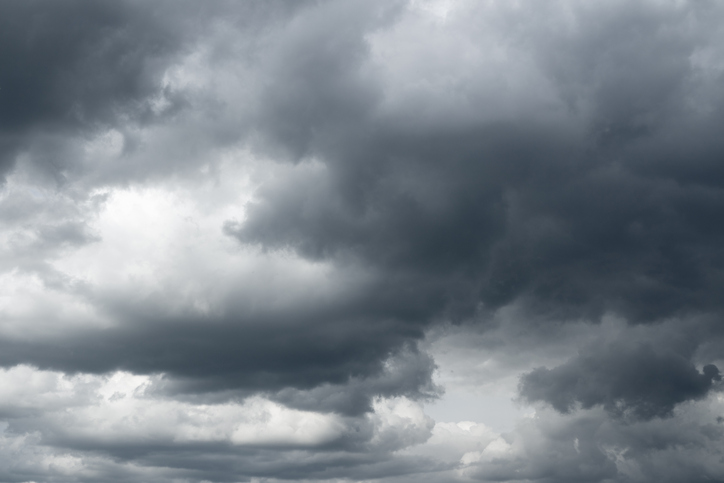Severe storms that battered California this winter are set to continue into spring.
Atmospheric rivers and cold fronts have brought near-record rain and snow to areas that have been battling drought-like conditions for many years. More storms are predicted to make landfall in coming weeks.
The storms have led to flooding, road closures, power outages and fatalities. They have caused billions of dollars in damages.
Gov. Gavin Newsom last week eased some drought restrictions after the three driest years on record. He didn’t declare the drought to be over because water shortages remain in parts of densely populated Southern California.
Approaching warmer temperatures are expected to increase the risk of floods and mudslides as snowpack starts to melt in the mountains, threatening foothill communities.
“This is not a normal year,” said Michael Wehner, a scientist in the computational research division at Lawrence Berkeley National Laboratory, in Berkeley, Calif. One of the factors that has led to near-record rainfall is the weather phenomenon La Niña. The powerful pattern, which has now ended, has a pronounced effect on weather in the U.S. as it shifts the jet stream north.
California experienced at least four “Pineapple Expresses,” strong atmospheric storms in which moisture builds up in the Pacific around Hawaii and pelts the West Coast with heavy rainfall and snow, according to Alex Tardy, a meteorologist with the National Weather Service. A Pineapple Express can bring as much as 5 inches of rain in one day, according to the National Oceanic and Atmospheric Administration.
A succession of moderate storms, meanwhile, has saturated the soil. Cold fronts and snow storms dumped record amounts of snow in some places, reaching levels last seen in the 1980s. Lakes and reservoirs that store water are nearing capacity in some areas.
California’s 54-person congressional delegation wrote to President Biden Wednesday saying they support the state’s request for a “major disaster declaration,” and asked for more federal support.
Here are key figures from the storms so far:
Atmospheric Rivers
California has experienced about 25 atmospheric rivers since the winter storms began late last year, with Southern California experiencing at least 12 of those storms, according to Mr. Tardy, the meteorologist.
Snow
Statewide snowpack is nearing record levels at 60.5 inches. That is higher than any other reading since the snow sensor network, a measuring device used when it rains or snows, was established in the mid-1980s, according to Sean de Guzman of the California Department of Water Resources.
“This year will certainly be in the top three or four snowpack years since the 1950s,” said Mr. de Guzman.
Snow in the Sierra Nevada is a little more than double the historical 30-year average, according to Mr. Tardy. The Mammoth and Tahoe regions have received the most snow on the West Coast, he said.
“Our snowpack has never been this deep,” Mr. Tardy said.
Snowpack is the amount of snow on the ground that persists until the arrival of warmer weather. When it turns to snowmelt, the runoff can affect water supply.
Snowfall, which measures how much snow has fallen in a certain period, is also close to record highs.
The University of California, Berkeley’s Central Sierra Snow Lab in Soda Springs, Calif., said this year’s snowfall was the largest since the early 1980s. The lab has recorded 713.8 inches, or 59.5 feet, of snowfall since October, compared with a normal full-season total of around 360 inches, or 30 feet, according to the U.S. Drought Monitor.
With another 20.7 inches of snow added this week, it is now the second-snowiest winter since the lab began tracking measurements in 1946. More snow is expected next week.
Water levels
Lakes and reservoirs in some parts of the state are nearing capacity, according to Mr. Tardy. Lake Oroville and Shasta Lake have tripled their capacity, and were at 81% and 82% capacity, respectively, as of March 28.
Since December, Lake Oroville, the state’s largest water storage facility, has increased approximately 200 feet in depth and gained just under 2 million acre-feet of water, according to California’s Department of Water Resources.
Economic damage
Severe weather and flooding in California since Dec. 26, 2022, has led to $5 billion to $7 billion in damages, according to a Moody’s report from late January. The estimate reflects inland flood impact and includes damage to infrastructure caused by atmospheric river storms, according to the report. It is based on event reconstruction and reflects property damage and interruption to businesses “across residential, commercial, industrial, automobile and infrastructure assets,” according to Moody’s.
California has spent more than $60 million in response and recovery work, according to the governor’s office.
Deaths
Dozens of people have died after fierce storms lashed California. Only some of those deaths will be classified as weather-related, because authorities tend to investigate only fatalities of people who weren’t under medical care or in a hospice, or if it wasn’t known if they were under a doctor’s care. It can take time to determine a storm-related death.
The California Governor’s Office of Emergency Services said this week it has confirmed nine storm-related deaths, including two in San Francisco County, and one each in Lassen, Mariposa, Placer, San Bernardino, San Mateo, Santa Clara, and Ventura counties.













